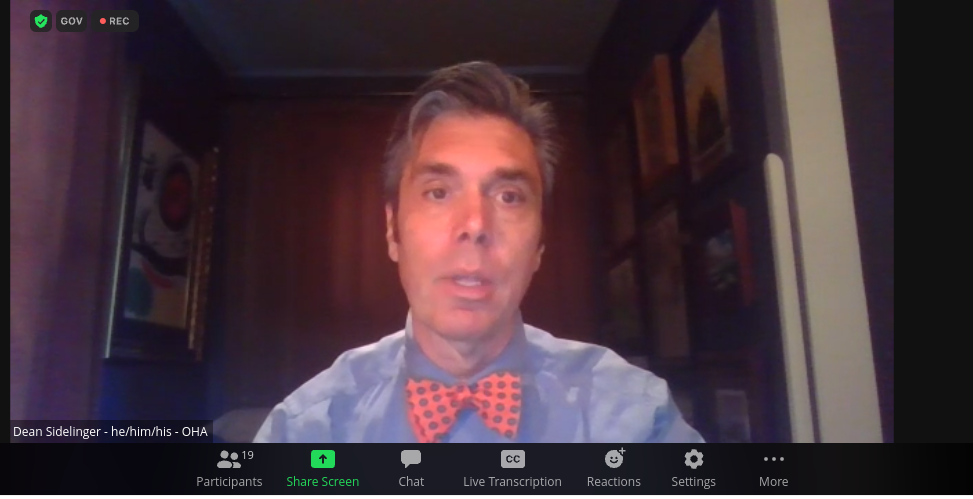
Oregon public health officials are encouraging Oregonians to get COVID-19 booster shots and influenza vaccinations as the state approaches the fall and winter flu season.
This year’s anticipated peak in cases isn’t expected to be as bad as prior surges in COVID-19, though a peak is forecast for early December, health officials said.
“We anticipate seeing a surge in COVID-19 cases as we move into the fall and winter,” said Dr. Dean Sidelinger, epidemiologist and health officer for the Oregon Health Authority in an update to reporters on Thursday about COVID-19 cases and vaccinations.
Sidelinger’s comments came one day after the U.S. authorized COVID-19 boosters for children as young as 5 up to 11. Sidelinger urged Oregonians to take advantage of vaccinations and boosters – and talk to their pediatricians if they have any questions. There’s now a Pfizer booster dose for 5- to 11-year-old children and a Moderna dose available for children 6 and older.
The shots are intended to provide protection against the traditional coronavirus strain as well as BA.4 and BA.5 omicron versions.
Before Labor Day, officials had authorized a Pfizer booster for those 12 and older.
“This week's news is the next step in expanding protection to all ages,” Sidelinger said.
Those boosters are available for children who have completed their original series at least two months ago.
Cases are down in recent weeks in Oregon. The state’s rolling seven-day average was 580 cases as of Sept. 7 and 482 cases as of Oct. 12.
That’s just part of the picture, though. The state’s wastewater monitoring efforts show there continues to be transmission of COVID-19, Sidelinger said.
The Centers for Disease Control and Prevention on Oct. 9 reported nine counties in eastern and southern Oregon are considered at a medium risk level, meaning those who are immunocompromised should consider wearing a mask to protect themselves, Sidelinger said.
The push comes amid capacity issues for Oregon hospitals, which continue to be plagued with workforce shortages that, in turn, limit the beds that are available.
However, hospitals are no longer full simply from COVID-19, as they were in prior surges of the pandemic. Pent-up demand for other services is also a factor, along with the difficulty hospitals face in staffing beds.
State lawmakers recently approved nearly $40 million in emergency funding to help hospitals beef up staff and move patients to lower levels of care sooner.
Sidelinger said the state cannot put a number on how many COVID-19 patients would need to fill hospital beds before a return to mandates because of other factors, like health care workers out sick and people needing hospital care for other needs.
“We have to see what’s going on,” he said, stressing that the state prefers encouraging precautionary measures before turning to mandates.
Those steps include wearing a mask if you are at risk or living and caring for other high risk people.
For more information about COVID-19 vaccinations and where to obtain one in Oregon, visit https://covidvaccine.oregon.gov/.
You can reach Ben Botkin at [email protected] or via Twitter @BenBotkin1.